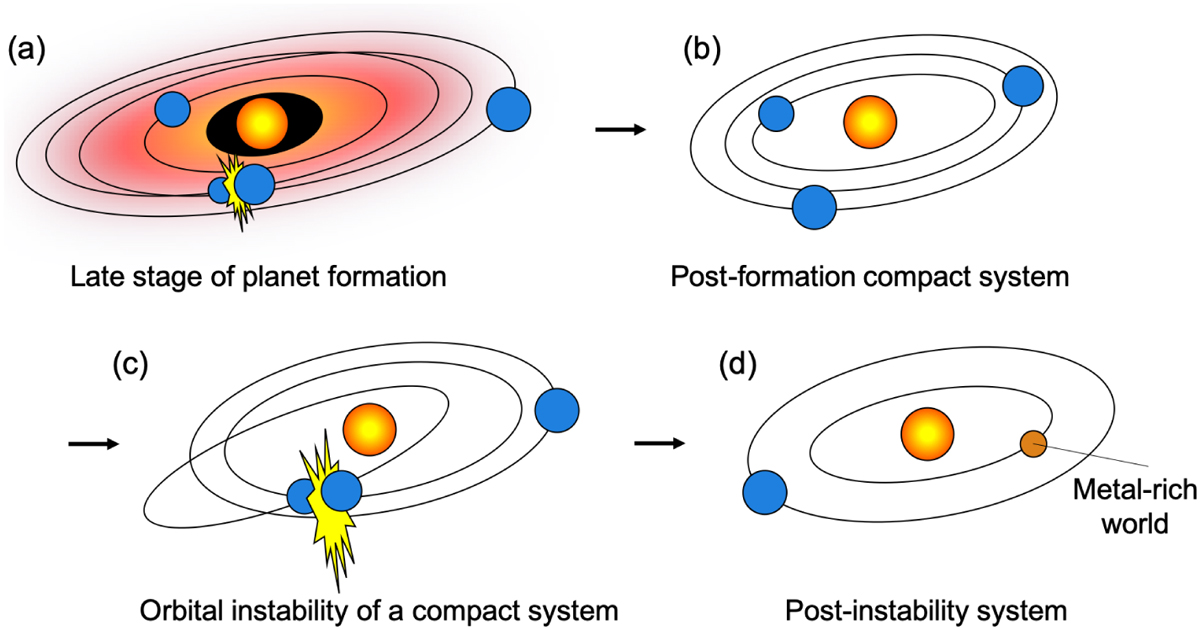Fig. 1

Download original image
Formation theory for the observed high-density exoplanets. (a) Super-Earths are predicted to complete their formation through giant impacts whose energies are too low to strip their rocky mantles and form metal-rich planets (Scora et al. 2020, 2022; Poon et al. 2020; Esteves et al. 2022; Goldberg & Batygin 2022). (b) After their formation ceases, super-Earths can remain on closely spaced orbits typical of observed compact systems (Weiss et al. 2023) and can experience instabilities over timescales comparable to the main-sequence lifetime of their host stars (Volk & Gladman 2015; Pu & Wu 2015; Tamayo et al. 2020; Volk & Malhotra 2020). (c) If a compact system becomes unstable, super-Earths can experience a second stage of giant impacts that are more energetic than those that occurred during their formation (Volk & Gladman 2015). These late giant impacts may erode the silicate mantles of the super-Earths to form metal-rich, high-density planets. (d) The post-instability planetary systems may have a metal-rich world with density akin to the measured densities of observed high-density exoplanets (Table 1). Colors indicate different planetary compositions: orange is metal-rich, blue indicates planets with a terrestrial composition (that is, differentiated in an iron core and a rocky mantle with core-mass fraction ∼30 wt.%).
Current usage metrics show cumulative count of Article Views (full-text article views including HTML views, PDF and ePub downloads, according to the available data) and Abstracts Views on Vision4Press platform.
Data correspond to usage on the plateform after 2015. The current usage metrics is available 48-96 hours after online publication and is updated daily on week days.
Initial download of the metrics may take a while.


